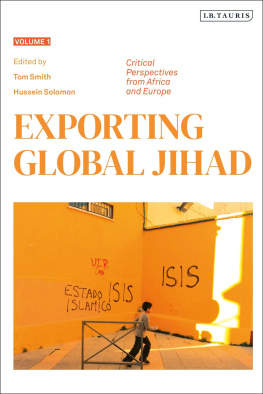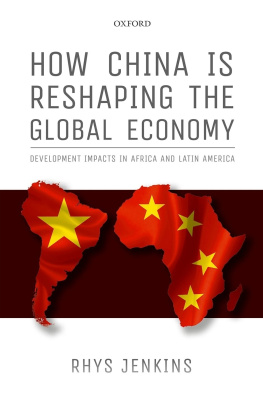Global Perspectives on
Prostitution and Sex Trafficking
Global Perspectives on
Prostitution and Sex Trafficking
Europe, Latin America, North
America, and Global
Edited by Rochelle L. Dalla, Lynda M. Baker,
John DeFrain, and Celia Williamson

Published by Lexington Books
A wholly owned subsidiary of The Rowman & Littlefield Publishing Group, Inc.
4501 Forbes Boulevard, Suite 200, Lanham, Maryland 20706
http://www.lexingtonbooks.com
Estover Road, Plymouth PL6 7PY, United Kingdom
Copyright 2011 by Lexington Books
All rights reserved. No part of this book may be reproduced in any form or by any electronic or mechanical means, including information storage and retrieval systems, without written permission from the publisher, except by a reviewer who may quote passages in a review.
British Library Cataloguing in Publication Information Available
Library of Congress Cataloging-in-Publication Data
Global perspectives on prostitution and sex trafficking / edited by Rochelle L. Dalla... [et al.].
p. cm.
Includes bibliographical references and index.
ISBN 978-0-7391-3275-3 (v. [1] : cloth : alk. paper)ISBN 978-0-7391-3277-7 (v. [1]: electronic)ISBN 978-0-7391-4385-8 (v. [2]: cloth: alk. paper)ISBN 978-0-7391-4387-2 (v. [2]: electronic)
1. Prostitution. 2. Human trafficking. I. Dalla, Rochelle L.
HQ118.G56 2010
306.74'209dc22
2010043820
 The paper used in this publication meets the minimum requirements of American National Standard for Information SciencesPermanence of Paper for Printed Library Materials, ANSI/NISO Z39.48-1992.
The paper used in this publication meets the minimum requirements of American National Standard for Information SciencesPermanence of Paper for Printed Library Materials, ANSI/NISO Z39.48-1992.
Printed in the United States of America
Contents
by Ine Vanwesenbeeck
by Kamila Wasilkowska
by Belinda Brooks-Gordon
by Vladimir I. Zubkov
by Elder Cerqueira-Santos and Silvia Koller
by Arun Kumar Acharya
by Rosario Esteinou
by Dominique Roe-Sepowitz and Yasmina Katsulis
by Samir Goswami
by Donna Sabella
by Meredith Dank
by Kathleen Price
by Jacqueline Lewis and Frances M. Shaver
by Ada Sinacore and Dorota Lech
by Tami Moore
by Lisa L. Thompson
by Lisa L. Thompson
by Christopher Carey
Tables and Figures
Introduction
At the time of publication, few other books are dedicated to the global exploration of the commercial sex industry (CSI)it is precisely for this reason that this project was initiated. As scientists and scholars we, the editors, conceived of this project as a means of (1) expanding the knowledge base of critical issues facing women, men, and children impacted by the commercial sex industry, as well as (2) providing new avenues for continued scholarship, policy directives, educational endeavors, and service provision in relation to the global commercial sex trade. We believe our mission has been accomplished and take great pride in the two-volume set Global Perspectives on Prostitution and Sex Trafficking: Implications for Research, Education, Policy, and Service. In order to better understand the final product, however, we believe it is necessary for the reader to understand the process which culminated in the publication of these volumes.
The Journey
From the beginning, we envisioned a book which would explore issues related to the commercial sex industry on a global scale, with each chapter devoted to a particular country in one of seven unique geo-cultural areas of the world including: Africa, Asia, Europe, Latin America, North America, Middle East, and Oceania. Thus, a Call for Papers was created explicating our long-term vision and requesting solicitations for proposals. The Call emphasized diversity noting our desire for international scholars, service providers, and policy advocates from a variety of fields and disciplines, with distinct and varied frames of reference and theoretical underpinnings in regard to CSI.
The Call was distributed globally via professional organizations, listservs, and personal networks and connections. The responsethe number of proposals we receivedwas overwhelming. Each proposal was peer reviewed individually by each of the editors; as a group, we then discussed the appropriateness of each for the final book we envisioned. Given both the quantity and quality of proposals received, we were in the enviable position of being able to negotiate with our publisher who supported the expansion of our vision from a single book to a two-volume set.
The two volumes are divided by geographic region: Volume I comprised of chapters representing Africa, Asia, Middle East, and Oceania, while Volume II encompasses Europe, Latin America, North America, and a section devoted to issues of global interest and impact. As editors, we worked directly with authors throughout an extensive editing processwith all of us working to produce a final product that would represent us well while simultaneously having the desired impact. We also gratefully acknowledge Jean Sharif-Kashani whose work on this project was invaluable to its completion.
There are several important points to keep in mind while perusing these volumes. First, as editors, it has been our intention from the initiation of this project that the authors were the experts of the subject matter and thus, as long as statements could be supported we allowed great latitude in focus, writing style, and personal position. Therefore, editorial suggestions and changes were largely limited to grammatical issues rather than content. Second, we required that each author provide a contextual description of the country in which their writing was situated so that the reader could gain an understanding of the unique issues of the commercial sex industry as impacted by geography as well as culture. Third, to maintain the flavor of the country of origin from which each chapter is based, language style and use differ appreciably across the chapters. That is, we encouraged authorsmost of whom were not primary English speakersto write in a manner that conveyed the culture and country about which they wrote. Finally, because we envisioned a final product with potential for extensive application we required authors to describe the implications of their work and asked that implications be relevant and applicable to a broad spectrum of enthusiastic readers. We were not disappointed. Authors have described implications ranging from continued scholarship and research, to legislative maneuvers and policy change, to suggestions for collaboration across NGOs, field-workers, clinicians, and service providers.
Volume II: Overview
A complete assessment of each of the 18 expertly crafted chapters within Volume II is presented below. Still, as qualitative researchers, the editors were compelled to examine the issues comprising this volume thematicallysearching for commonalities among the whole. The similarities were quickly evident. One of the most pronounced themes is that of the regulation of female sex work and sex workers rights. This theme is evident in multiple chapterswith several entirely devoted to the topic. Interestingly, one chapter focuses not on sex workers rightsbut ratheron the rights of male clients. In sharp contrast, the second most prominent theme is that of the










 The paper used in this publication meets the minimum requirements of American National Standard for Information SciencesPermanence of Paper for Printed Library Materials, ANSI/NISO Z39.48-1992.
The paper used in this publication meets the minimum requirements of American National Standard for Information SciencesPermanence of Paper for Printed Library Materials, ANSI/NISO Z39.48-1992.